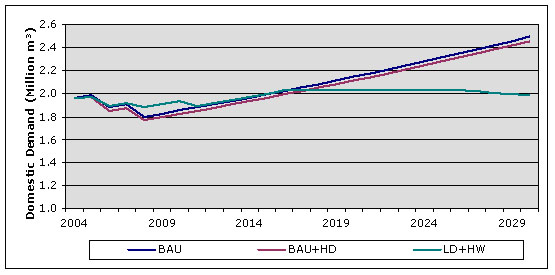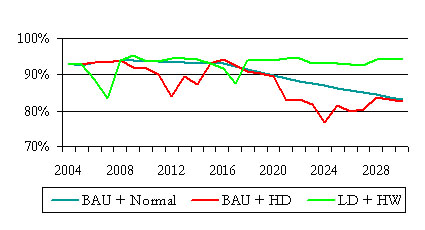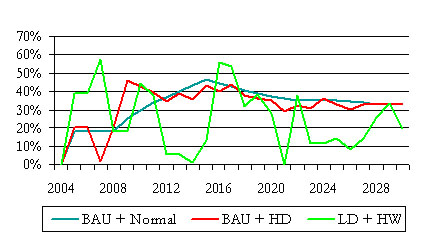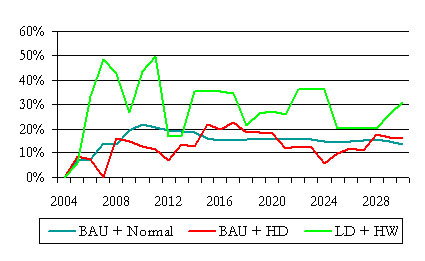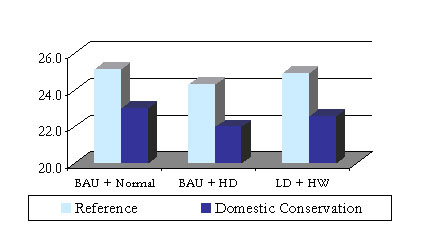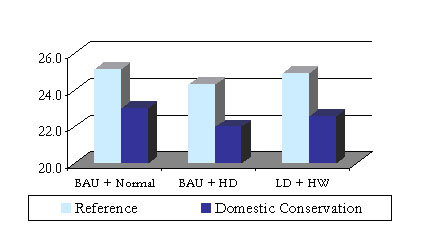
ISSUE 6 |
||||||||||||||||||||||||||||||||||||||||||||||||||||
|
|
|||||||||||||||||||||||||||||||||||||||||||||||||||
Option results |
||||||||||||||||||||||||||||||||||||||||||||||||||||
|
Figure 1 presents domestic demand after the implementation of successive applications of conservation measures. Figure 1. Domestic demand after the application of conservation measures for the three scenarios |
||||||||||||||||||||||||||||||||||||||||||||||||||||
|
|
||||||||||||||||||||||||||||||||||||||||||||||||||||
Effectiveness |
||||||||||||||||||||||||||||||||||||||||||||||||||||
|
Domestic conservation can be an effective response in terms of domestic demand coverage, since it can stabilise the effect of domestic demand increase for a period of approximately 10 years (Figure 2). The maximum improvement in domestic use deficit is reached under high wet conditions, while under a normal (average) water availability sequence, this reaches a maximum of 47% in year 2015 (Figure 3). After that, the effect of the application of the option gradually reduces as demand escalates. The same improvements, although more decreased, stand for the effectiveness to irrigation demand coverage and the improvement of irrigation deficits, with a more pronounced effect under the LD+HW scenario (Figure 4 and Figure 5).
Figure 2. Percent demand coverage effectiveness of Domestic use Conservation
measures Figure 3. Percent Improvement of deficit in Domestic use with respect to the reference scenarios
Figure 4. Percent demand coverage effectiveness of Domestic use Conservation
Figure 5. Percent Improvement of deficit in Irrigation use |
||||||||||||||||||||||||||||||||||||||||||||||||||||
Direct and Environmental Costs |
||||||||||||||||||||||||||||||||||||||||||||||||||||
|
As with all measures aiming to enhance the efficiency of domestic usage, conservation results in a decrease of the total direct cost of the system, of about 8-10%, due to the reduction of operating costs associated with domestic water supply (Figure 6). The effect is more intense than the one associated with network loss reduction, since the cost of conservation is much lower than the one associated with network replacements.
Figure 6. Total direct cost difference of the Domestic use Conservation
measures option Similarly to the reduction of network losses, domestic conservation does not directly affect groundwater abstraction volumes. Therefore, with the exception of the LD+HW scenario, environmental costs do not show significant variation (Figure 7).
Figure 7. Total environmental cost difference of the Domestic use
Conservation measures option |
||||||||||||||||||||||||||||||||||||||||||||||||||||
